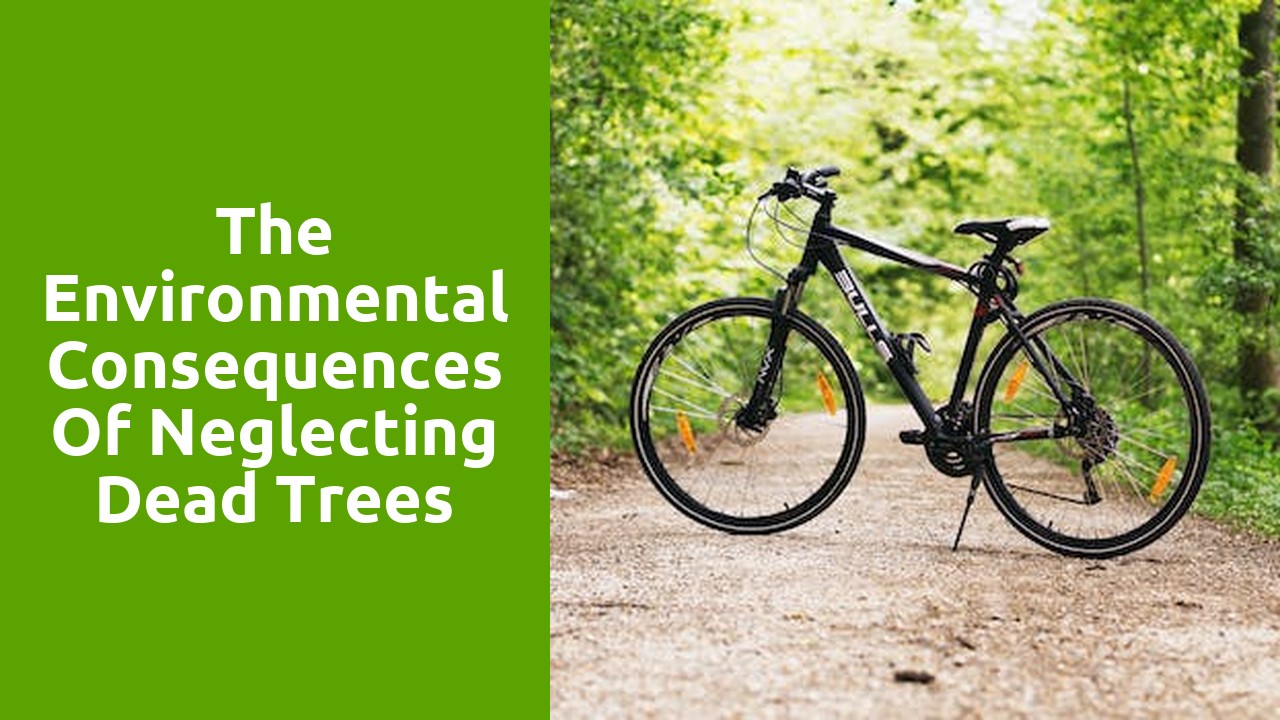
The Environmental Consequences of Neglecting Dead Trees
Recognizing the Importance of Dead Trees in Ecosystems
Dead trees may seem like a lifeless and insignificant part of an ecosystem, but they hold immense importance and play a crucial role in maintaining the delicate balance of nature. While they may not possess the same vibrant appearance as their living counterparts, dead trees provide essential habitat and resources for numerous organisms.
One of the most significant contributions of dead trees is the creation of habitat for a variety of species. Standing dead trees, commonly known as snags, offer nesting sites for birds such as woodpeckers, owls, and even cavity nesting ducks. These birds rely on the hollowed-out trunks and branches of dead trees to raise their young and seek shelter from predators. Additionally, decaying logs and fallen branches provide habitat for countless insects, fungi, and small mammals, which in turn serve as a vital food source for larger predators. This interconnected web of life highlights the essential role that dead trees play in supporting biodiversity within an ecosystem.
The Role of Dead Trees in Biodiversity Conservation
Dead trees may not seem like valuable assets to some, but they actually play a vital role in biodiversity conservation. When a tree dies and decomposes, it provides a unique habitat for a plethora of organisms. These decaying trees, known as snags, serve as the foundation for a complex ecological community that supports a wide range of species, from insects and birds to fungi and mammals.
One of the primary functions of dead trees is to attract and provide food for decomposers. As the tree decomposes, it releases nutrients into the surrounding soil, creating a fertile environment for bacteria, fungi, and other microorganisms to thrive. These decomposers break down the dead tree's organic matter, recycling vital nutrients back into the ecosystem. This process not only enriches the soil but also generates food sources for other organisms, triggering a cascade of life within the forest ecosystem.
How Neglecting Dead Trees Affects Soil Health
Dead trees play a crucial role in maintaining the health and fertility of soil. When dead trees are neglected and left untouched, they gradually break down and decompose. As the tree decomposes, it releases essential nutrients into the soil, enriching it with organic matter. This process, known as nutrient cycling, is vital for the growth and development of plants. Neglecting dead trees disrupts this natural process, leading to a decline in soil health.
One consequence of neglecting dead trees is the loss of organic matter in the soil. Organic matter is a key component of healthy soil, as it provides a food source for soil organisms and helps retain water. When dead trees are left to decay naturally, they contribute to the organic matter content of the soil, replenishing it with valuable nutrients and enhancing its ability to support plant life. However, when dead trees are neglected, this organic matter is not replenished, leading to a decrease in soil fertility and overall soil health.
Impacts of Neglecting Dead Trees on Nutrient Cycling
Dead trees play a crucial role in nutrient cycling within forest ecosystems. As these trees decay and decompose, they release important nutrients back into the soil. This process is essential for the growth and health of surrounding vegetation. However, neglecting dead trees can have significant impacts on nutrient cycling, disrupting this delicate balance.
When dead trees are left unattended, their decomposition is slow, leading to a buildup of organic matter. This accumulation can inhibit the release of nutrients, preventing them from being recycled efficiently. As a result, nearby plants and trees may suffer from nutrient deficiencies, affecting their overall vitality. Additionally, the decomposition of dead trees is an essential part of the carbon cycle, with the release of carbon dioxide during decay. Neglecting these dead trees can contribute to increased levels of atmospheric carbon, exacerbating climate change.
The Threat of Increased Wildfire Risk Caused by Ignoring Dead Trees
As the summer months approach, the threat of wildfires looms over many parts of the country. One key factor that contributes to the severity of these fires is the rampant disregard for dead trees. These silent time bombs are often overlooked, and their potential danger remains unrecognized until it's too late. Ignoring these dead trees not only poses a risk to the environment but also endangers the lives and properties of individuals residing in fire-prone areas.
Dead trees, with their dry and brittle branches, provide an ideal fuel source for wildfires. Neglecting their removal creates an ideal environment for fires to spread rapidly, destroying vast areas of land in their wake. Additionally, these dead trees can serve as ladder fuels, allowing flames to easily climb upwards and engulf healthy trees, exacerbating the blaze even further. The consequences of this negligence can be devastating, leading to irreparable damage to ecosystems, loss of wildlife habitats, and an increased threat to both human lives and property.
Dead Trees as Habitat for Wildlife: The Effects of Neglect
Dead trees, although often considered unsightly and neglected, play a vital role in providing habitat for a diverse range of wildlife species. Despite their decaying appearance, these lifeless remnants stand tall as valuable resources, supporting numerous organisms within their decaying structure. From insects and fungi to birds and mammals, dead trees offer a wealth of ecological benefits that should not be overlooked.
Insects, in particular, thrive in the decaying wood of dead trees. Bark beetles, wood-boring beetles, and termites find refuge and sustenance amidst the decomposing timber. These tiny creatures break down the cellulose in the wood, aiding in the process of decomposition. In turn, their activity attracts a host of other organisms, ranging from spiders to amphibians, that feed on these insects. The intricate network of life that unfolds within a dead tree is a testament to its significance as a habitat.
Related Links
The Risk of Tree Failure: Dead Trees and Falling BranchesReasons to Prioritize the Removal of Decaying Trees in Urban Environments